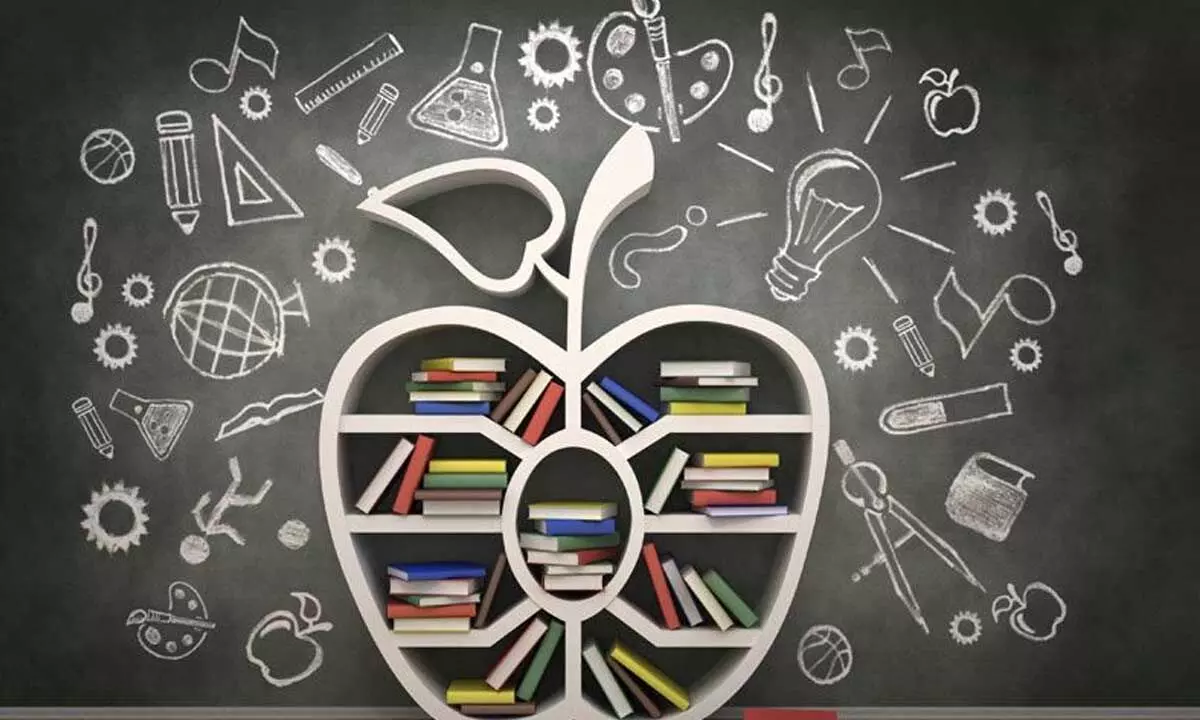A holistic method for learning in the 21st century

A holistic method for learning in the 21st century
The goal of a holistic education is to help each kid develop into a self-reliant, independent adult who will positively impact their community.
The goal of a holistic education is to help each kid develop into a self-reliant, independent adult who will positively impact their community. It stresses the need to nurture empathy and environmental consciousness. It values the student's mental, emotional, and social health equally.
In contrast to typical classrooms, where the emphasis is on products and outcomes, holistic educators collaborate closely with students to identify how class time might be used most effectively. Within a real-world environment, these classrooms contain a variety of experiments, projects, debates, and student-centred activities. Teachers that take a more holistic approach to education recognise that every kid learns in their own unique manner. By keeping this in mind, students are better equipped to deal with the challenges they will face in the real world via the cultivation of skills like critical thinking and problem solving.
With the help of this teaching approach, kids gain the self-assurance, resiliency, and tenacity that will help them become more "future-ready."
Here are the benefits of holistic method for learning
Experiential Learning
Experiential learning institutions emphasise practical application in the classroom. Students may, for instance, explore multiple learning styles in groups to identify which types are most successful for them. Holistic, hands-on strategies often use problem-solving activities to solve community problems or make creative products.
Learning becomes a lifetime passion for students
The goal of a truly holistic education is for each student to get an understanding that they are an integral component of and have considerable agency within a larger system. This strategy helps pupils grow intellectually, physically, socially, psychologically, and emotionally.
A holistic approach to education creates a supportive and constructive atmosphere in which instructors educate pupils on "how" to learn, as opposed to the conventional strategy of rote memorization, which stresses "what" to learn. Students in school have the chance to develop their natural curiosity and learn how to solve their own problems.
This strategy for teaching includes getting students to follow their interests, achieve their goals, and learn more about who they are.
Holistic learning will help students by teaching them to recognise and value their potential, and it will inspire lifelong learning. The process of self-discovery that begins in the classroom will continue for the rest of the student's life.
Improved academic achievement
The academic success of students from all walks of life may be enhanced with the implementation of holistic education because of its ability to accommodate different learning styles and provide a nurturing classroom atmosphere. When children feel physically and emotionally protected and connected to others, their cognitive powers grow.
Enhanced mental and emotional well-being
Students are more likely to gain self-awareness, confidence, and a sense of social responsibility if they go to school in a supportive environment that puts equal importance on both academics and social and emotional growth.
Increased critical thinking and problem-solving ability
The critical thinking abilities of students are honed when they are given authentic challenges to solve in their local communities. Students learn practical skills that they may use in their adult professions via these hands-on projects, including how to collect, evaluate, and report data as well as how to work with others.
These are the following methods of holistic learning
Group projects
If educators want to see greater equality and diversity in their classrooms, they can push for more group projects that include kids of both sexes and a wide range of abilities.
Opportunities for self-guided learning
This is a successful strategy in which the learner takes responsibility for his or her own learning. This involves responsibilities such as choosing, supervising, and evaluating their own learning activities. Teachers help students by giving them guidance, direction, and resources. Peers offer support and work together with them.
Community welfare activities
A well-rounded education goes beyond just studying in the classroom; it also incorporates service to the community via things like charitable giving and clean-up initiatives.
After-school programs
There is a pressing need for high-calibre after-school programmes in all communities since the things kids do when school's out have a major impact on their maturation.
Fieldwork/trips/excursions
Discovery is central to the human experience. Through tours and excursions, students may experience learning in a more real-world setting. This gives students the experiences and lessons in life that are important for education in today's world.
Thematic teaching
Thematic teaching has numerous positive outcomes and may be used successfully in a variety of educational settings, including day cares, classrooms, and homes. They not only bring the two together, but also give students a more concrete way to understand abstract ideas.
Holistic Methods and Strategies for Teachers and Schools
An excellent educator is someone who makes learning enjoyable. To guarantee that every student is learning new material, he or she uses a wide range of approaches tailored to the individual needs of each student. A successful strategy is when the school and instructors offer students a physically and emotionally secure atmosphere. Students should be given opportunities to take on leadership positions, and teachers should encourage them. If teachers take the time to talk about what each student has done well and boost their confidence while also stressing the importance of active listening and careful observation, each student will be better prepared to learn.
The implementation of holistic education is seamless when schools allow students to actively engage in co-curricular activities for all-round growth. Families of kids may be included in school-sponsored team-building and collaborative endeavours.
Parental Involvement
Parents are fundamental to their children's growth and development. A parent should have a positive relationship with the instructors. In addition to phone calls, parent-teacher conferences, school newsletters, and internet contact, parents should have excellent communication with teachers. Parental involvement may also take the form of attending or participating in enjoyable school events and activities with one's own family. At all times, parents should be their kids' biggest cheerleaders at home. Time and undivided attention should be provided to the youngster in order to meet their emotional requirements. When parents take an interest in their children's learning and take part as if they were learning for themselves, the child's development in all areas is complete.
The 21st century method of teaching is holistic, effective, and deliberate. It may assist young people in becoming balanced and well-rounded individuals. It has a lot in common with other points of view, like humanism and sociocultural theory, and it gives a lot of thought to how emotions work in education.
(The author is the founder of Bachpan Play Schools & AHPS)










